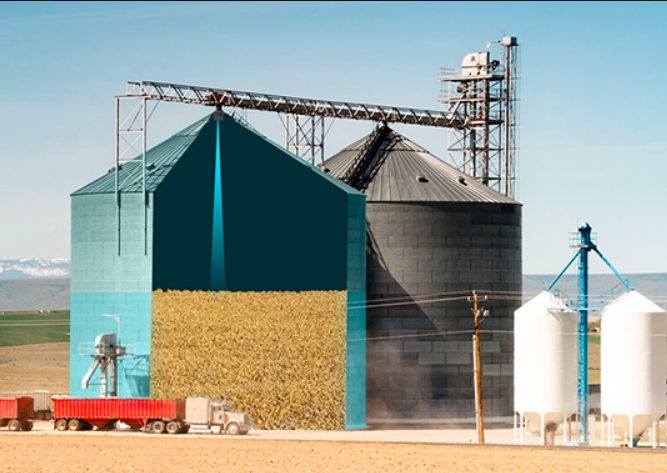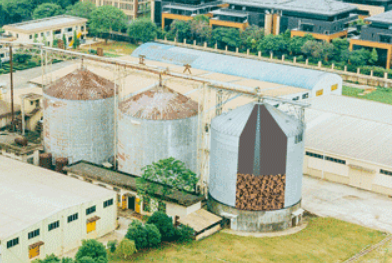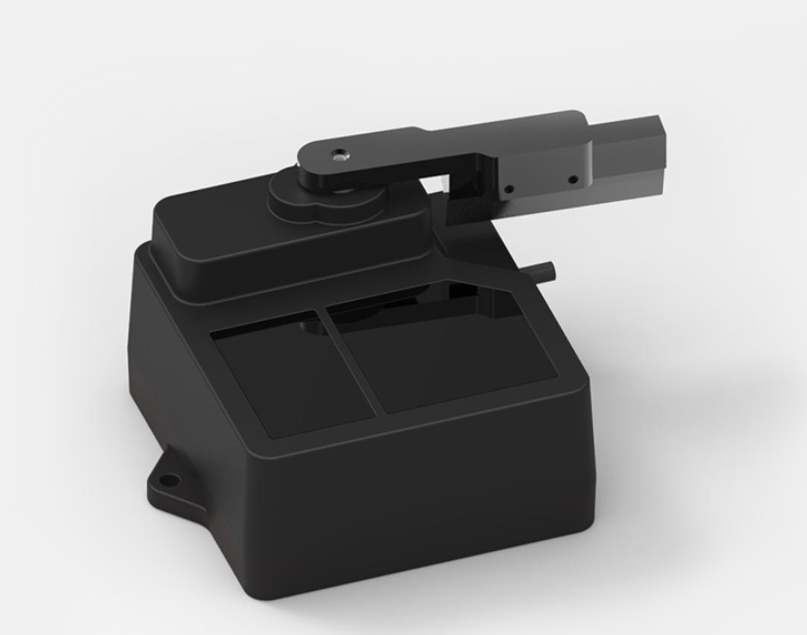Long Distance Series Product Model

2025-10-28
In the era of Industry 4.0, characterized by smart manufacturing, system interoperability, and data-driven decision-making, materials constitute the core resource that powers the entire production cycle.
Inventory management visualization (the ability to clearly and dynamically monitor the quantity, location, and movement of materials) plays a pivotal role in boosting production efficiency. This visibility enables factories to better coordinate production schedules with upstream supplier deliveries and downstream customer demand, thereby increasing the overall flexibility and responsiveness of the supply chain.
Achieving this goal requires advanced solutions, such as a small LiDAR sensor capable of efficient, automated, and low-intervention material-level monitoring.

Level monitoring in silos and storage containers presents a series of practical difficulties that affect both production efficiency and workplace safety. Here are some common issues that increase the need for a small LiDAR sensor.
The invisibility of materials inside large, enclosed containers like silos and tanks presents a primary hurdle in level management. Since the material surface cannot be observed directly, specialized tools are required for evaluation.
Traditional manual monitoring methods are highly subjective and prone to error, exposing workers to significant safety risks, such as falls from height and exposure to toxic or dusty environments.
Furthermore, because these manual measurements are typically performed at fixed intervals (e.g., daily or per shift), plants may fail to detect sudden changes in material levels (such as unexpected consumption or leakage) in a timely manner.
Stored materials, particularly powders and bulk solids, rarely stay in a uniform condition. They may collapse suddenly under their own weight or create arches that block the natural flow inside silos. Since the surface level changes unevenly, traditional level detection methods can misinterpret the top of an arch or a collapse cavity as the actual material surface, leading to significant deviations in measurement results.
Both overloading and empty silos are direct consequences of inaccurate level monitoring, and either situation can bring about serious production disruptions and safety hazards.
l Overloading occurs when the material fill level exceeds the silo's maximum capacity. This subjects the silo structure to excessive pressure, potentially causing cracks, leaks, or even catastrophic structural collapse, threatening to safety of workers and equipment.
l An empty silo results from underestimating the material level, allowing production to continue without timely replenishment. This situation can prompt the sudden shutdown of production lines and harm equipment. For instance, pumps or conveyor systems operating without material may overheat from dry running, leading to mechanical failure.
All these challenges explain why industries require small LiDAR sensors that can deliver accurate, automated, and real-time insights to maintain stability in complex production environments.
The reflective characteristics of stored materials play a decisive role in how effectively level monitoring technologies operate. Each material type presents its own set of complications that must be addressed to achieve consistent accuracy.
The rough, porous surface of powders severely scatters sound waves, compromising measurement reliability. Furthermore, airborne dust tends to settle on equipment surfaces, which interferes with and attenuates the signal. Traditional manual cleaning methods increase maintenance time and labor costs while also introducing safety hazards.
Small LiDAR sensors with self-cleaning capability, such as those from Benewake, can effectively remove accumulated dust. This ensures the laser beam remains unobstructed and minimizes scattering, enabling consistently accurate distance measurements to the material surface.
Granular materials (e.g., grains, pellets, resins) provide more stable reflectivity than powders. However, their irregular shapes and significant flow variations cause surface level fluctuations due to shifting or uneven settling. This instability leads to fluctuating measurement accuracy and accelerated equipment wear (Float/Level Gauge), presenting a dual problem. Therefore, effective monitoring requires a height detection sensor that can adapt to this continuous surface movement.

Liquids typically have a smooth, highly reflective surface, making them easier to measure under stable conditions. However, turbulence, foaming, or agitation can distort reflections and reduce precision. In applications such as chemical processing or water treatment, sensors need to overcome three major challenges: surface disturbances, chemical corrosion, and high-temperature effects, to maintain accuracy under dynamic surface conditions.
Small LiDAR sensors like our Benewake models bring precision and consistency to level monitoring. By leveraging high-precision laser pulses and advanced signal processing, they collect accurate, real-time, and reliable material-level data, delivering significant value to factories in terms of operational efficiency, cost savings, and safety.
Our Benewake small LiDAR sensors enable facilities to monitor several silos through a single system, eliminating the need for separate monitoring setups. This centralized approach showcases managers with a complete overview of storage conditions, improving efficiency and reducing operational complexity.
The modern LiDAR material level monitoring systems can integrate directly with enterprise platforms such as ERP, WMS, and MES. By synchronizing accurate level data with these systems, factories maintain alignment between production schedules, warehouse operations, and supply chain planning. This ensures decisions are based on real-time information instead of delayed manual reports.
Our small LiDAR sensors continuously monitor material levels and issue instant alerts when thresholds are reached. Early warnings prevent overloading, protect against shortages, and reduce the risk of workplace accidents. This enhances both operational safety and production reliability.
Beyond real-time measurement, LiDAR records historical data that can be used to identify long-term trends. Reviewing material usage patterns helps refine purchasing decisions, detect recurring flow problems, and improve overall planning accuracy.
The TF02-Pro-W is designed for accurate bulk-material level detection, offering a compact build, low power use, and strong performance across harsh conditions.
l It delivers a detection range up to 25 m with ± 6 cm to ± 1 % accuracy, adjustable frame rates from 1 Hz to 1,000 Hz, and resistance to bright light up to 100 KLux.
l Its self-cleaning wiper and dust-filtering algorithm ensure reliable operation in dusty or smoky environments.
l This height detection sensor supports UART, I²C, RS-485, and Modbus connections, with wireless options such as LoRaWAN, 4G, and Wi-Fi for flexible integration into ERP, WMS, and MES systems.
l Compact dimensions (85 × 59 × 43 mm), an IP5X rating, and an operating range from –20 °C to 60 °C make this lightweight LiDAR durable and easy to deploy.

Industrial-level management faces numerous obstacles that impact production accuracy, efficiency, and safety. These stem from complex material properties, harsh industrial environments, and the limitations of traditional monitoring technologies.
Our Benewake small LiDAR sensors facilitate automated level monitoring, helping factories prevent production stoppages due to material shortages and avoid the capital and space waste associated with overstocking.
Ready to transform your facility? Contact us today.